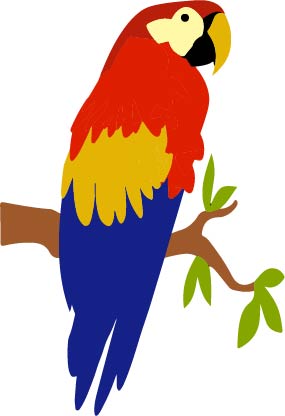Parrots Reveal Lack of Sustainability in Agriculture
ORCiD research observes agricultural impact on ecosystems
Agriculture is one of the most invasive ecosystem practices in the world. Planting season is approaching in the United States, and farmers might start to open up new croplands to make more money after the rough year they’ve been having. Current U.S. milk prices, on the farmer’s end, are at a current level of $17.10 per Hundred Weight, down from 17.50 last month and down from 18.90 one year ago. This is a decline in value by 2.29% from last month and a drop of 9.52% from one year ago. This caused a significant drop in profit during the quarantine and the following months. A recent study was completed in 2020 by a group of researchers from ORCiD to investigate sustainability in agriculture. ORCiD is a non-profit organization that participates in “research, scholarship and innovation across the world.”
ORCiD conducted a model study where they used parrots because of their wide distribution across the globe with 398 different species live in various habitats. Over a few years, they observed through many different methods and consulting with the International Union for Conservation of Nature, to get species conservation statuses before starting their research to get a baseline of the species’ current statuses. The researchers found that the more cropland farmers are opening up, the more wildlife has to rely on that land to survive. ORCiD found that croplands cover approximately 25% of the original parrot habitats and 40% of the global cropland extent is located within the distribution range of all parrot species together. ORCiD also found that “the higher the number of habitats originally used by a species the higher the likelihood of this species to forage on agricultural lands.” ORCiD’s finding from their model study with the parrots has led them to conclude that the more land they take from the environment and the wildlife that lives there, the more they will use the crops in the fields. ORCiD researchers believe that the parrot model study reflects and relates to other wildlife species which are likely to forage more on agricultural lands, like the parrots.
According to the Bayer Global Group, “Despite short-term market shocks from COVID-19, the ag input market is expected to grow on average 3% annually over the next decade.”
The growing expansion of the agriculture industry will eventually lead to a high chance that there will be more interactions with farmers and wildlife. Securing a sufficient supply of quality food is just one side of the coin—the ORCiD study suggests that agriculture needs to meet these growing demands by using natural resources more efficiently and responsibly. This is a growing concern for many people globally.
Still, Andrew Cartmill, a professor at UW-Platteville from the Soil and Crop Science Department said, “I do not currently see any problems between agriculture and ecosystem services.”
Cartmill referred to the Food and Agriculture Organization and some of the concepts they have about wildlife conservation. The conclusions of the ORCiD research stated, “wild species have increasingly been reliant on human-made food resources…. As we suggest, further local-scale research is needed to fully assess the extent of parrot–agriculture conflicts.” ORCiD researchers saw that the more the parrots ate at the crops, the more aggressive the farmers got with them and killed the parrots, even going as far as persecuting them in the area. There is a need to increase the available cropland to support the growing population, but farmers also need to consider the world they are leaving behind.
This will all have a significant impact on the state of Wisconsin as farmers are approaching planting season. There are many things that a farmer needs to consider when looking to opening up new croplands. Eric Weber, an Agronomist at Country Visions Cooperative in Malone, WI, says, “that the most important thing to consider is whether or not the land will be worth using.”
Both Weber and Cartmill agree that maybe instead of investing in new land, farmers should improve their land. They gave examples of tiling the fields or fertilizing instead of clear-cutting a forest for land that won’t give the farmer profit for a couple of years. The agriculture community needs to be concerned with providing for the growing communities of the world and what they will leave behind for future generations.




